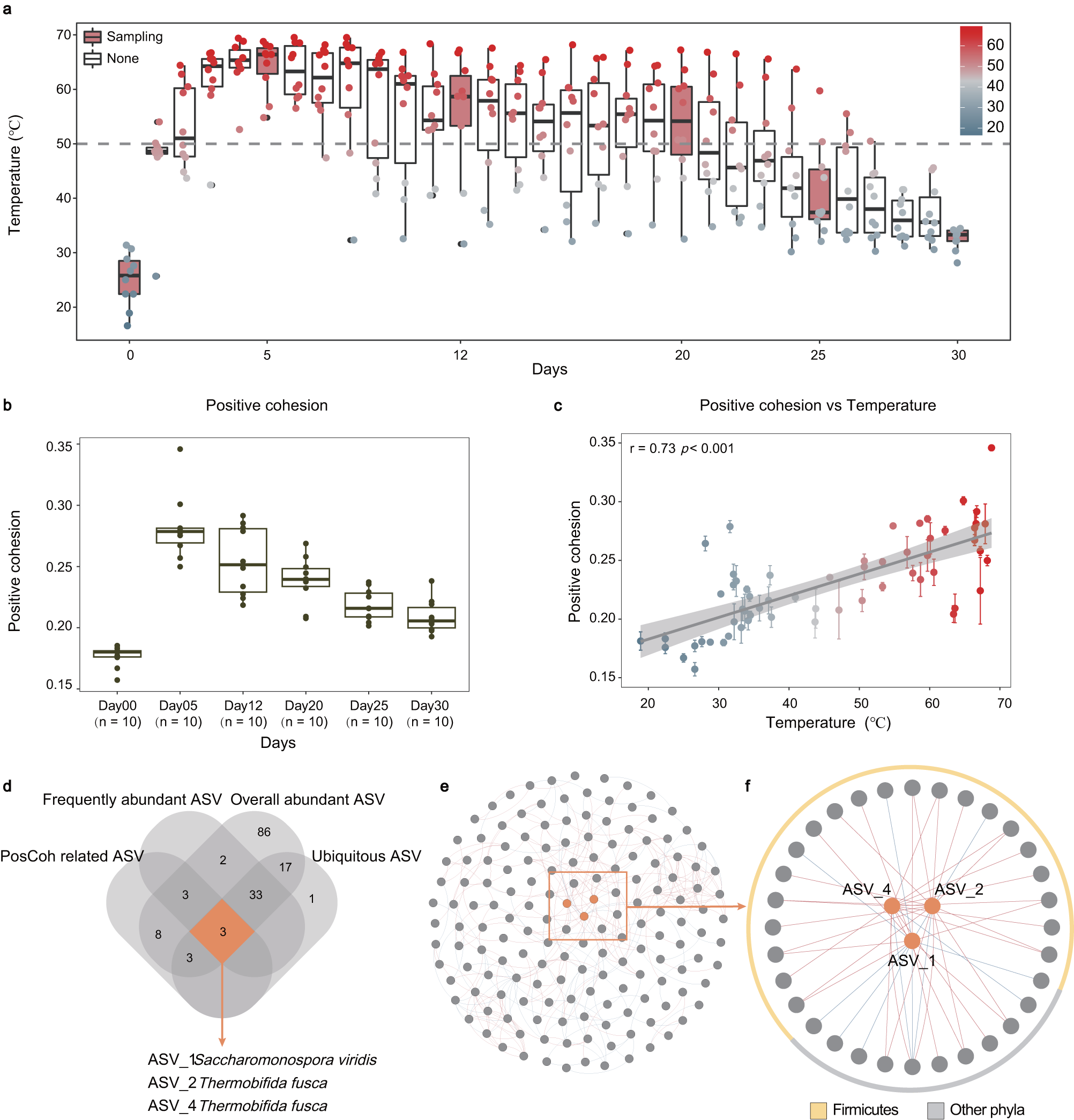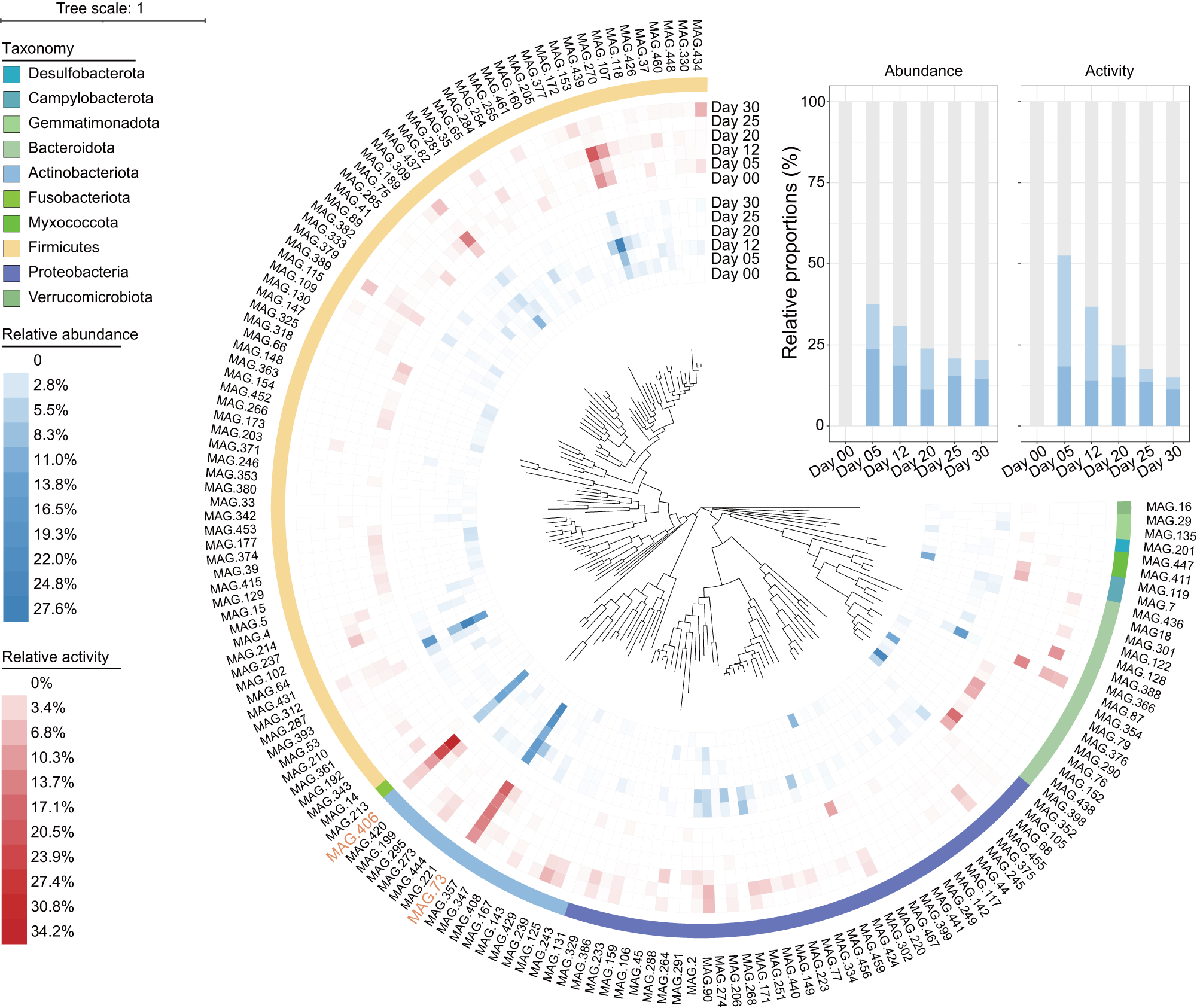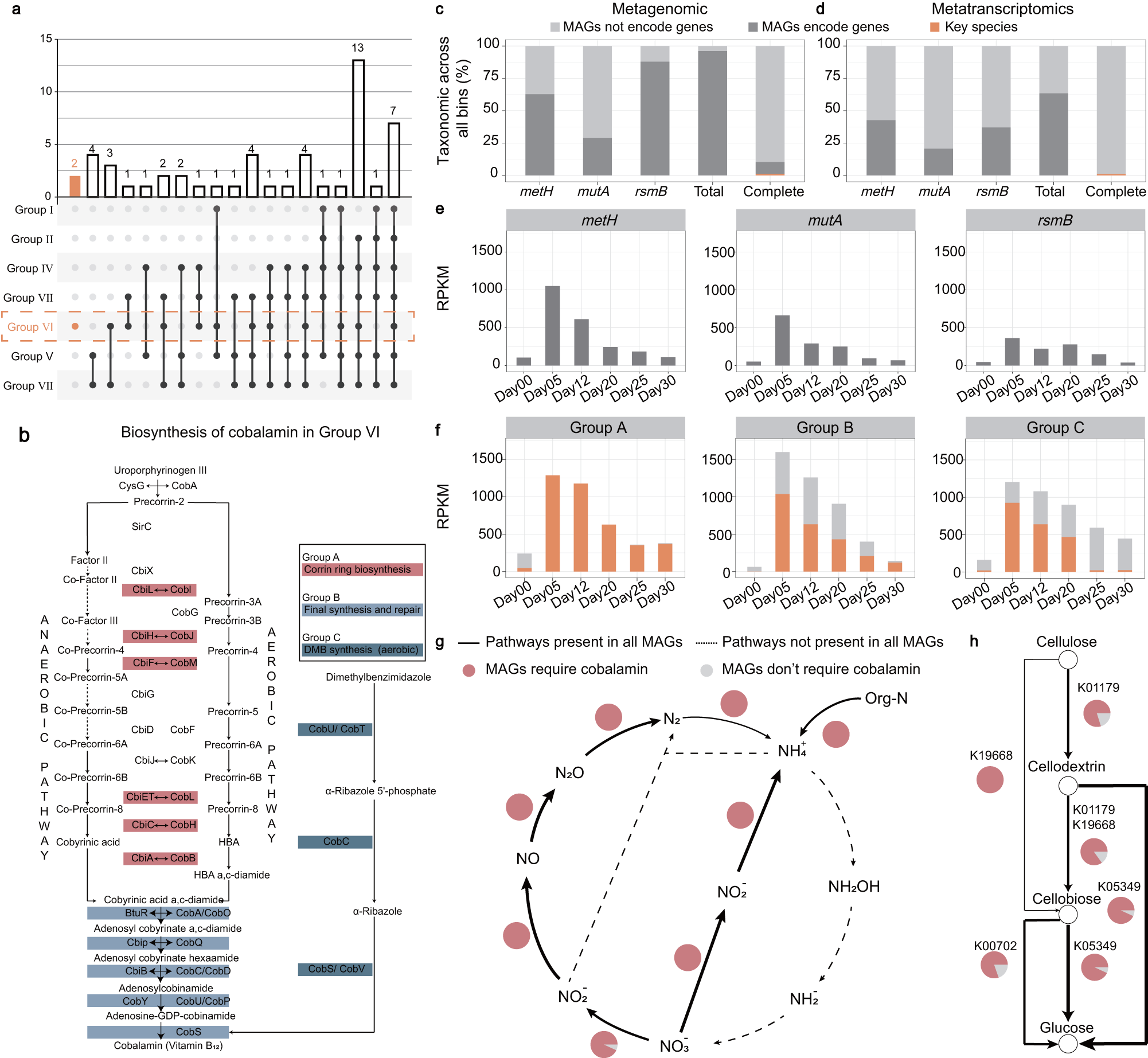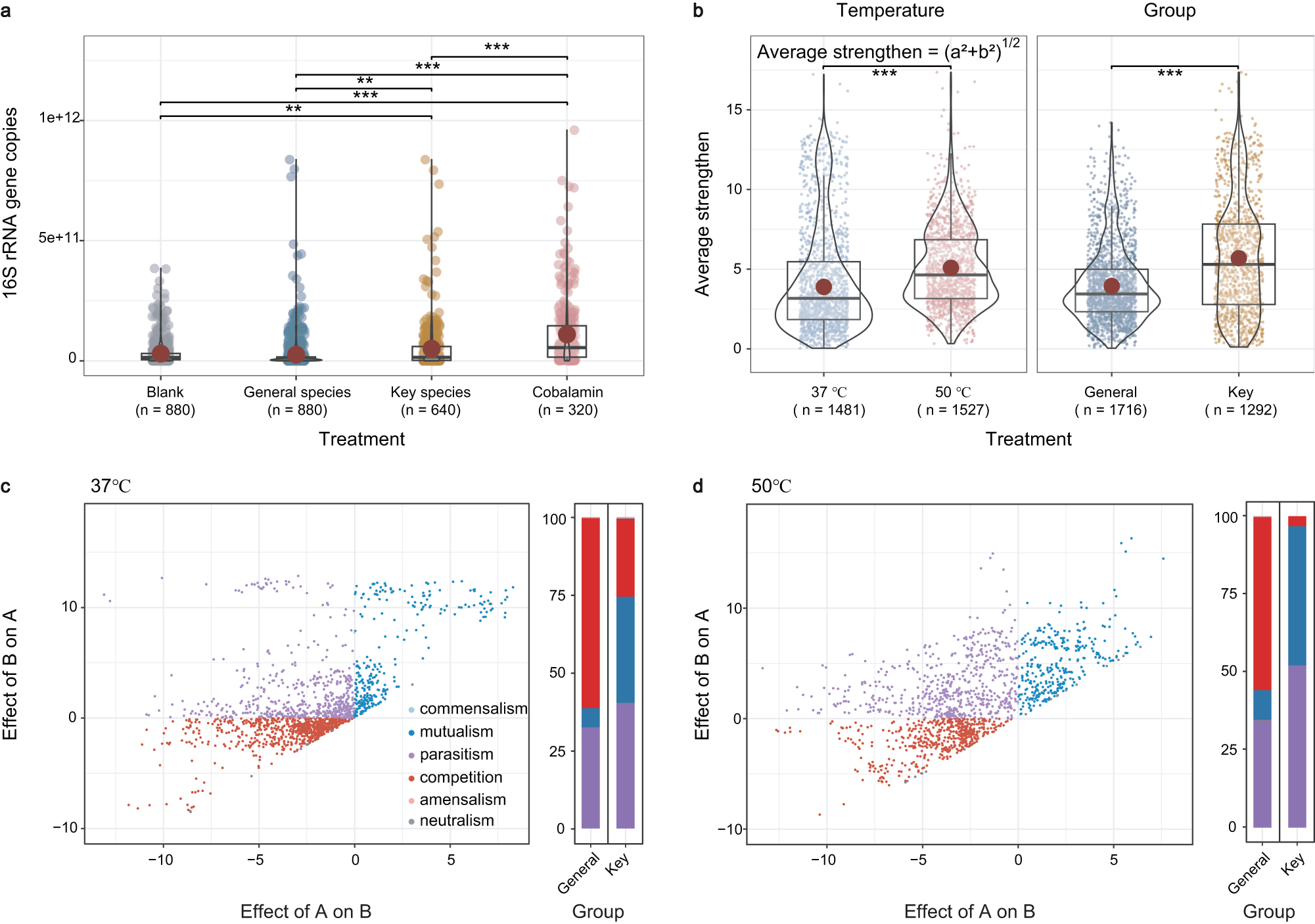博文
2023 NC 在以确定性温度变化为特征的系统中公共产品促进了细菌间的互利共生
||

翻译链接:美格基因 | 在以确定性温度变化为特征的系统中,公共产品促进了细菌间的互利共生 - 知乎 (zhihu.com)
翻译链接:胡宝兰教授团队在Nature Communications发文揭示变温生态系统中代谢产物共享促进细菌互利共生 (zju.edu.cn)
Fig. 1: Changes of temperature and positive cohesion.图1 :温度和正内聚力的变化

a Temperature variations in the 10 composting piles. 50 °C is generally considered to be the dividing line for composting in terms of distinguishing the high temperature phase from other phases in this system. In the boxplots of panels, hinges indicate the 25th, 50th, and 75th percentiles, whiskers indicate 1.5 × interquartile ranges, and dots indicate values of individual samples.
b Changes in the positive cohesion of different phases. In the boxplots of panels, hinges indicate the 25th, 50th, and 75th percentiles, whiskers indicate 1.5 × interquartile ranges, and dots indicate values of individual samples (n = 10 biologically independent samples for each day).
c Relationship between positive cohesion and temperature. Data are presented as mean values +/- SEM. Pearson correlation coefficients is shown (n = 60 biologically independent samples).
d Screening for the ACT ASVs (detail of the four criteria are described in Methods section).
e Whole composting network constructed by the random matrix theory (RMT) model. The red line indicates a positive correlation and the blue lines a negative correlation.
f The sub-network containing ACT ASVs and their neighbors. Different colors of the outer ring are used to indicate taxonomic affiliation.
a 10 个堆肥堆的温度变化。一般认为 50 °C 是堆肥的分界线,以区分高温阶段和该系统中的其他阶段。箱线图中,铰链表示第 25、50 和 75 百分位数,晶须表示 1.5 × 四分位数间距,点表示单个样本的值。
b 不同阶段正内聚力的变化。箱线图中,铰链表示第 25、50 和 75 百分位数,晶须表示 1.5 倍四分位数间距,点表示单个样本的值(n = 每天 10 个独立生物样本)。
c 正内聚力与温度的关系。数据以平均值 +/- SEM 表示。显示的是皮尔逊相关系数(n = 60 个生物独立样本)。
d ACT ASV 筛选(四项标准的详情见方法部分)。
e 用随机矩阵理论(RMT)模型构建的整个堆肥网络。红线表示正相关,蓝线表示负相关。
f 包含 ACT ASV 及其邻居的子网络。外圈的不同颜色用于表示分类隶属关系。
Fig. 2: Phylogenetic analysis of 159 high quality MAGs.图2 :159个高质量MAGs的系统发育分析

MAGs belonging to the same species as the ACT ASVs are marked in orange (i,e. MAG73 and MAG406).
The blue and red shading of the inner arcs represent the relative abundance and relative activity of each MAG during each phase of composting, respectively.
The details of the relative abundance and activity of MAG73 and MAG406 are highlighted in the histogram.
与 ACT ASV 属于同一物种的 MAG 标为橙色(即 MAG73 和 MAG406)。
内弧的蓝色和红色阴影分别代表堆肥各阶段中每种 MAG 的相对丰度和相对活性。
直方图中突出显示了 MAG73 和 MAG406 的相对丰度和活性细节。
Fig. 3: The biosynthesis and demand for cobalamin during composting based on metagenomic and metatranscriptomic sequencing.图 3:基于元基因组和元转录组测序的堆肥过程中钴胺素的生物合成和需求。
a The number of unique and shared modules related to the complete biosynthesis of amino acids, vitamins/co factors, and lipids/fatty acids between groups I–VII. Group VI, to which MAG73 and MAG406 belong, is marked in orange. Different sets are represented in different columns, with bars representing the number of sets and dots representing the composition (black: include, gray: exclude). For example, the second column refers that 4 modules (bar) are completed in both Groups V and VII (black point), but not in the other groups (gray point). b Three-step synthesis of cobalamin. c Proportion of MAGs encoding three cobalamin-dependent genes (i.e. mutA, metH, and rsmB) and those encoding the complete cobalamin biosynthesis pathway. Total refers to the number of MAGs containing each of these three genes. d Proportion of MAGs transcribing the three cobalamin-dependent genes and those transcribing the complete cobalamin biosynthesis pathway. e RPKM of the three cobalamin-dependent genes at different sampling points. f RPKM values for the three-step synthesis of cobalamin at different sampling points. g Cobalamin requirement of MAGs transcribing nitrogen cycle-related functional genes. h Cobalamin requirement of MAGs transcribing cellulose degradation-related functional genes. The line thickness indicates the number of MAGs transcribing the functional gene.
a I-VII 组之间与氨基酸、维生素/辅助因子和脂质/脂肪酸的完整生物合成有关的独特和共享模块的数量。MAG73 和 MAG406 所属的第 VI 组用橙色标出。不同的组在不同的列中表示,条代表组的数量,点代表组成(黑色:包括,灰色:不包括)。例如,第二列指的是第 V 组和第 VII 组(黑点)都完成了 4 个模块(条形图),而其他组(灰点)则没有。
b 钴胺素的三步合成。
c 编码三个钴胺素依赖基因(即 mutA、metH 和 rsmB)和编码完整钴胺素生物合成途径的 MAG 的比例。总数是指含有这三个基因的 MAG 的数量。
d 转录三个钴胺素依赖基因和转录完整钴胺素生物合成途径基因的 MAG 的比例。
e 三个钴胺素依赖基因在不同取样点的 RPKM 值。
f 不同采样点钴胺素三步合成的 RPKM 值。
g 转录氮循环相关功能基因的 MAGs 对钴胺素的需求量。
h 转录纤维素降解相关功能基因的 MAGs 对钴胺素的需求量。
线条粗细表示转录功能基因的 MAGs 数量。
Fig. 4: Microbial interactions between pure culture strains.图4:纯培养菌株之间的微生物相互作用。
a The growth yield of 40 Firmicutes strains after the addition of supernatants and cobalamin. The blank group received only LB medium (n = 880 biologically independent samples). The General group contained supernatants collected from Sphingomonas paucimobilis, Lactobacillus brevis, and Idiomarina andamanensis (10% (v/v)) after 72 h culture, respectively (n = 880 biologically independent samples). The key group contained supernatants collected from Thermobifida fusca and Saccharomonospora viridis (10% (v/v)), respectively (n = 640 biologically independent samples). The cobalamin group received additional LB medium (10% (v/v)) which contained 1.5 ppm cobalamin (n = 320 biologically independent samples). In the boxplots of panels, hinges indicate the 25th, 50th, and 75th percentiles, whiskers indicate 1.5 × interquartile ranges, and dots indicate values of individual samples. Unadjusted p-values of the one-way ANOVA are labeled as ***p < 0.001, **p < 0.01. b The average strength of interactions for different temperatures and groups (***p < 0.001). In the boxplots of panels, hinges indicate the 25th, 50th, and 75th percentiles, whiskers indicate 1.5 × interquartile ranges, dots indicate values of individual samples, and red pointa indicate mean values. A total of 3008 biologically independent samples were included and divided into different treatment, based on temperature (37 °C and 50 °C) and groups (General and Key). Significant comparisons (two-sided t-test) between different temperature and diffetent groups are indicated by ***p < 0.001. c The detail of interaction types under 37 °C. The stacked bar indicates the interaction types between the Key group and the General group. Bar colors indicate the type of interaction. d The detail of interaction types under 37 °C. Bar colors indicate the type of interaction. The legends are the same as for Fig. 4c.
a添加上清液和钴胺素后40株厚壁菌门菌株的生长产量。空白组只接受LB介质(n = 880个生物独立样品)。普通组含有72小时后分别从Sphingomonas paucimobilis, Lactobacillus brevis,和Idiomarina andamanensis(10%(v/v))收集的上清液(n = 880个生物独立样品)。关键组包含分别从Thermobifida fusca和Saccharomonospora viridis(10%(v/v))收集的上清液(n = 640个生物独立样品)。钴胺素组接受额外的LB培养基(10%(v/v)),其含有1.5ppm的钴胺素(n = 320个生物独立样品)。箱线图中,铰链表示第25、第50和第75个百分位,胡须表示1.5×四分位间距,点表示单个样本的值。单因素方差分析的未调整p值标记为***p < 0.001,**p < 0.01。
b不同温度和组的平均相互作用强度(***p < 0.001)。箱线图中,铰链表示第25、第50和第75个百分位,胡须表示1.5×四分位间距,点表示单个样本的值,红点表示平均值。共包括3008个生物独立性样本,并根据温度将其分为不同的处理(37 °C和50 °C)和组(常规和关键)。不同温度和不同组之间的显著比较(双侧t检验)由***p表示 < 0.001。
c 37°C时相互作用类型的详细信息 。堆叠的条形图指示关键组和常规组之间的交互类型。条形图的颜色表示交互的类型。
d 50C时相互作用类型的详细信息 。条形图的颜色表示交互的类型。图例与图4c相同。
https://wap.sciencenet.cn/blog-2675068-1415566.html
上一篇:2020 ISME 一种新型的细菌硫代硫酸盐氧化途径为深海零价硫的形成提供了新线索
下一篇:2012 CB 竞争而非合作主导可培养微生物物种之间的相互作用